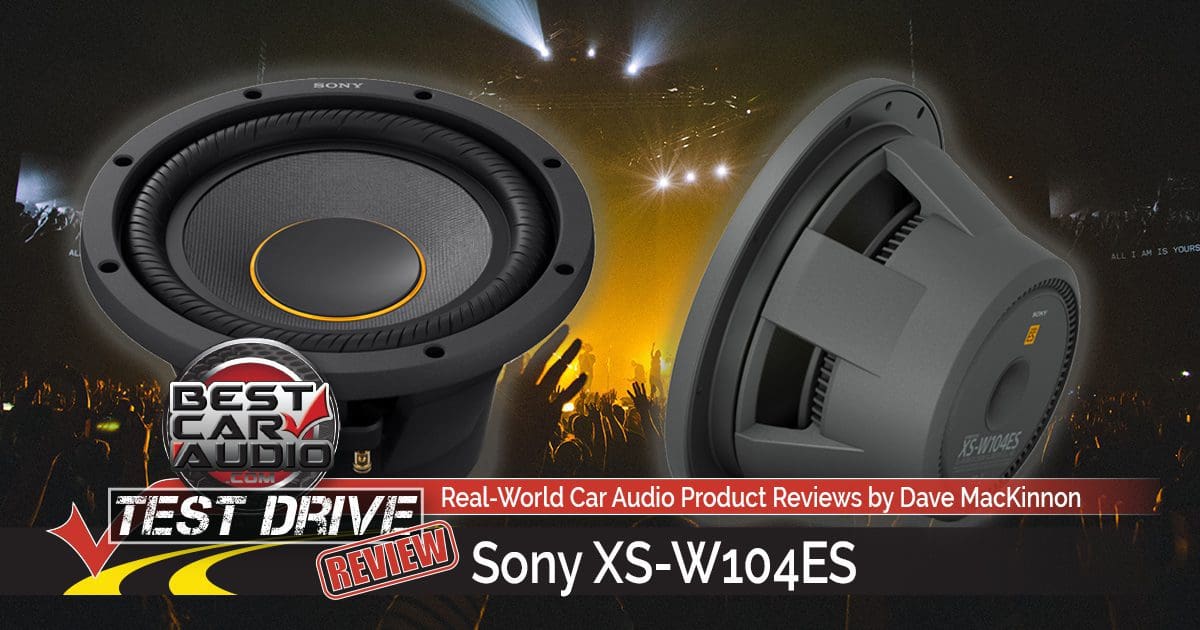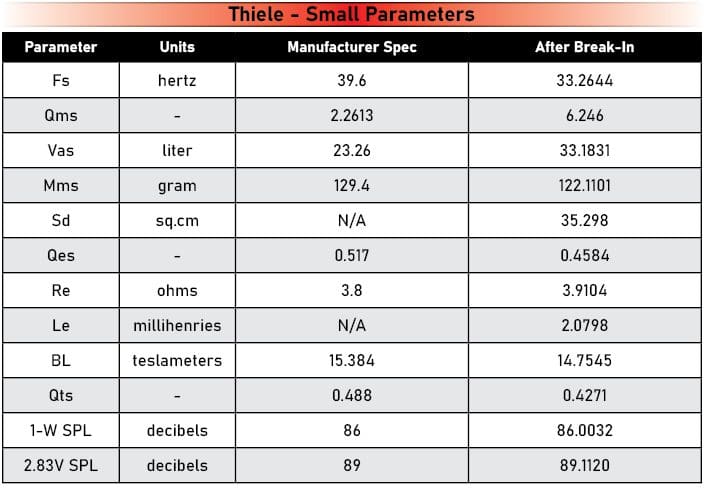When the team at Sony set out to recreate the much-lauded Mobile ES series of products, their initial plan included four popular speaker sizes and a high-performance subwoofer called the XS-W104ES. This 10-inch subwoofer combines features that help it deliver excellent performance with styling that sets it apart from other offerings. So let’s check out what makes this subwoofer unique.
Sony Mobile ES Subwoofer
Starting with the chassis, the XS-W104ES is based on a completely proprietary five-spoke, heavy-gauge stamped steel frame. The basket is concealed by a high-quality, injection-molded plastic shroud that covers the spokes and the magnet. A large mounting ledge for the massive progressive-roll spider is integrated into the stamped design. This ledge eliminates the need for spacers that can add cost to the bill of materials, or for a distortion-adding cupped spider design.
Extensive venting below the ledge lets hot air escape from the motor assembly. The shroud includes openings in the vent windows and around the magnet bottom plate to allow additional airflow around the motor assembly. Sony calls this cooling feature its Dynamic Air Diffuser. A cooling vent extends up through the pole piece to further assist in keeping the motor assembly cool.
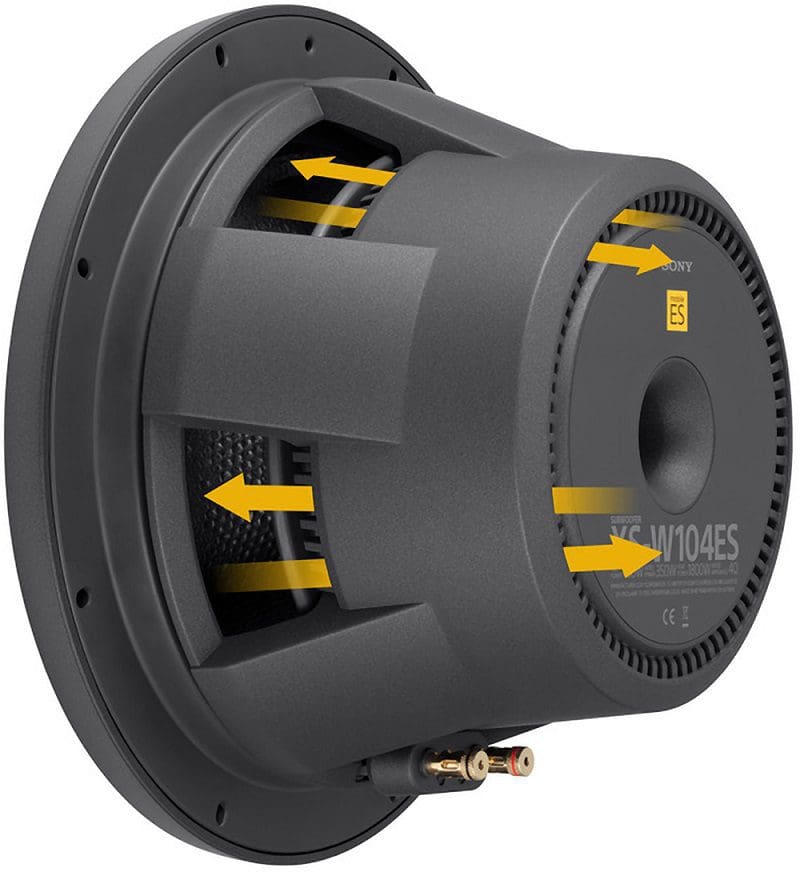
A pair of gold-plated, spring-loaded binding posts allows for easy electrical connections to the subwoofer. The openings in the posts should accept 12-AWG cables if threaded carefully. The tinsel leads soldered to the terminals are sewn to the spider in four locations and have large loops between each point to ensure that they can flex easily, even at high excursion levels. The voice coil has a diameter of 2 inches.
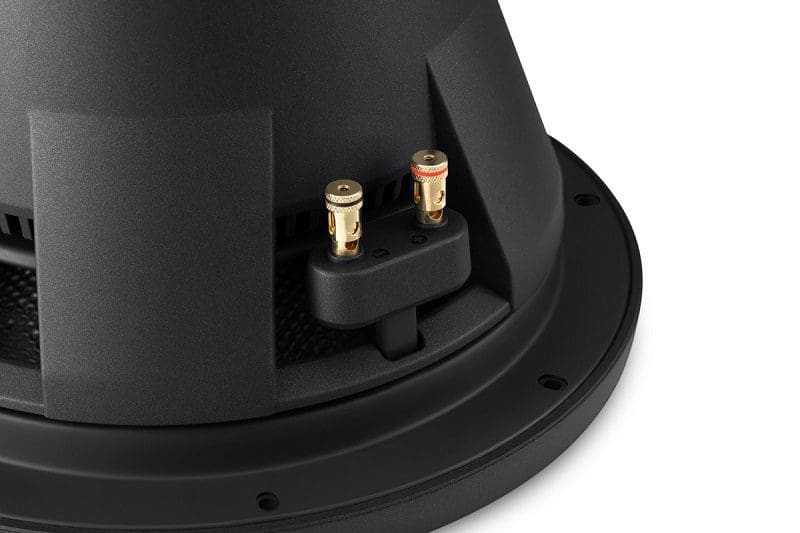
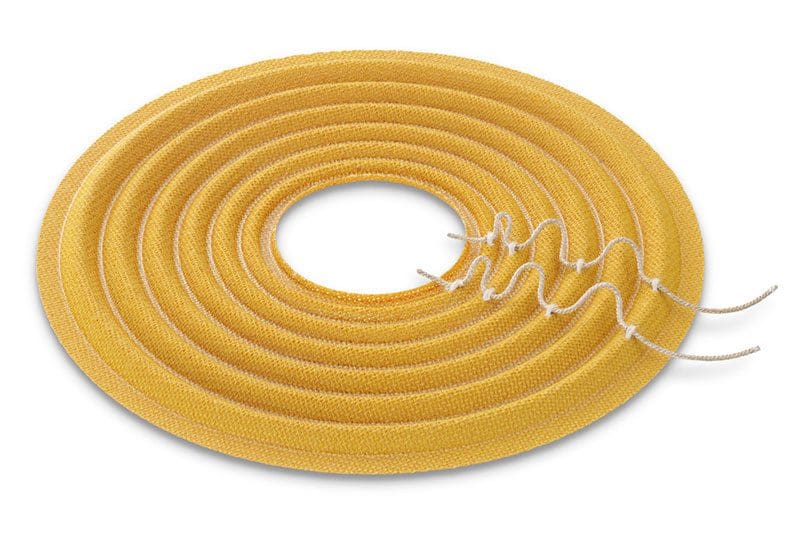
On top of the subwoofer, we find a curved cone that’s constructed from Sony’s third-generation Mica-Reinforced Cellular material. In essence, MRC is a pressed pulp paper bolstered with mica to improve thermal stability and with aramid fibers for increased strength. The result is a rigid yet well-damped material that helps minimize resonance distortion.
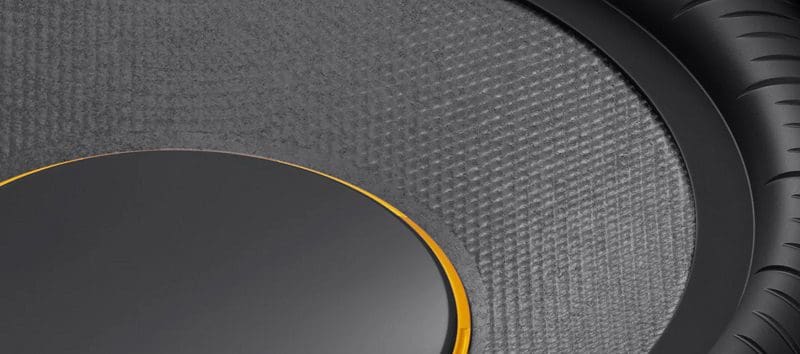
The cone is attached to the upper edge of the basket with a rubber surround that includes Sony’s new Separated Notch Edge Surround design. These notches not only allow the surround to compress and stretch at high excursion levels, they also help to damp unwanted resonances that can color the sound produced by the driver.
An aluminum dust cap in the center of the woofer is trimmed with a gold ring that includes five accents that match the five-beam frame design of the basket. Sony includes a rigid plastic trim ring that fits over the top mounting edge of the driver. The trim piece has the Sony logo at the top and the Mobile ES logo at the bottom. The eight included mounting screws are visible through the trim piece.
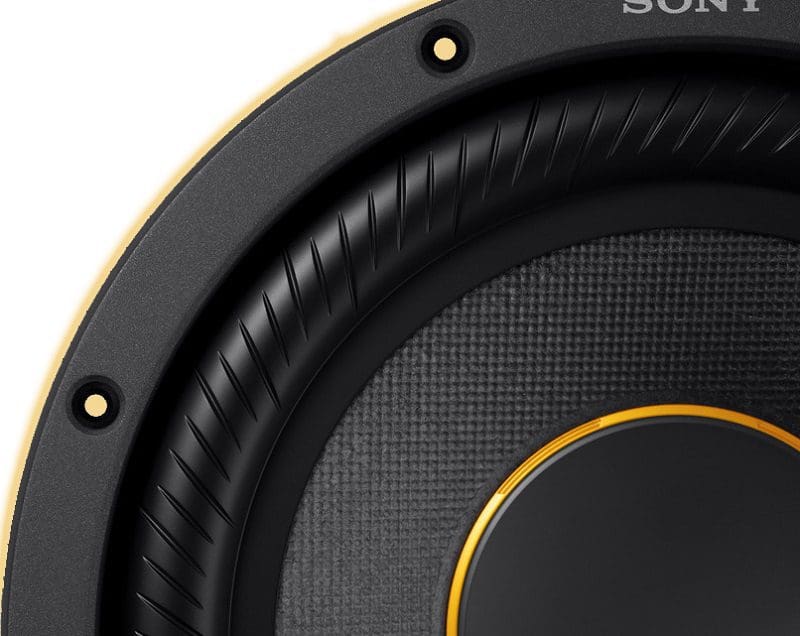
XS-W104ES Specifications
Sony specifies the driver as having a nominal impedance of 4 ohms and a power handling rating of 450 watts per the ANSI/CTA-2015 specification. Peak power handling is listed at a healthy 1,400 watts. Efficiency is listed at 89 dB @ 2.83 volts with a tolerance of plus or minus 2 dB. I’ll confirm that number once I break the driver in and measure its Thiele/Small parameters. Xmax is specified as 6.5 mm. I have a feeling this is a one-direction measurement, but I’ll confirm that as well during the break-in process.
The owner’s sheet that comes with the subwoofer includes two recommended enclosure designs. The recommended sealed enclosure calls for a net volume of 1.01 cubic feet, though the provided enclosure dimensions produce an enclosure with a volume of 0.77 cubic foot. For the bass reflex enclosure, the story is the same. The sheet calls for 1.44 cubic feet, but the dimensions produce an enclosure with a net volume of 1.14 cubic feet.
I ran some simulations on both designs in BassBox Pro 6 and decided that the 1.14 cubic foot design was reasonably small yet still offered a good low-frequency extension. As such, that’s the enclosure I constructed, with a slight tweak to allow for a large 1.5-inch radius on the inner and outer edges of the 4-inch diameter vent. Adding a radius to the edge of a vent, even one this large, can help reduce distortion at high air velocities. At a drive level of 450 watts, this large vent should only produce an air velocity of 26.5 meters per second around 39 Hz. The 42 Hz vent-tuning frequency should result in the system delivering a -3 dB frequency of 36.4 hertz, according to our software simulation. There’s a nice little bump of almost 3 dB at 53 dB that should make this single 10-inch subwoofer a lot of fun.
Sony Subwoofer on the Test Bench
I can learn a lot about a subwoofer during the break-in process. As I increase the power to the sub, it’s easy to hear non-linearities or noise from cooling systems. I can also get an idea of the excursion capabilities of the driver.
In the case of the XS-W104ES, the first thing I can tell you is that the provided Xmax spec of 6.5 mm doesn’t correlate with my performance observations. The driver had no problem with more than an inch of excursion before adding significant unwanted harmonic distortion. I’d rank this among subs with at least 12 to 14 millimeters of one-way excursion capability.
It’s also worth noting that the integrated cooling systems operate quietly, with no significant huffing or chuffing from the pole piece vent or the spider vents.
I took a set of Thiele/Small parameter measurements before I began the break-in. I’m always curious if the specs change significantly after running at a high excursion level for several hours. You can see the “before break-in” specs in the chart below. Then, I set the driver up with a 20-volt, 28-hertz test tone to stretch the spider (if it needed stretching) while I started examining other products in the Test Drive Review queue.
As you can see, the resonant frequency (Fs) dropped from just under 40 Hz to a hair over 33 Hz. This is because of the compliance of the spider decreasing from about 23 liters to just over 33. What does this mean? The suspension softened and now allows the cone to move more freely. That explains the lower Fs value, but it also drops the Qts from 0.86 to a nice low 0.43.
In terms of producing significant low-frequency output, these are great improvements. It does mean that you’ll need to play the subs for a while, though. But that’s what they’re for, right?
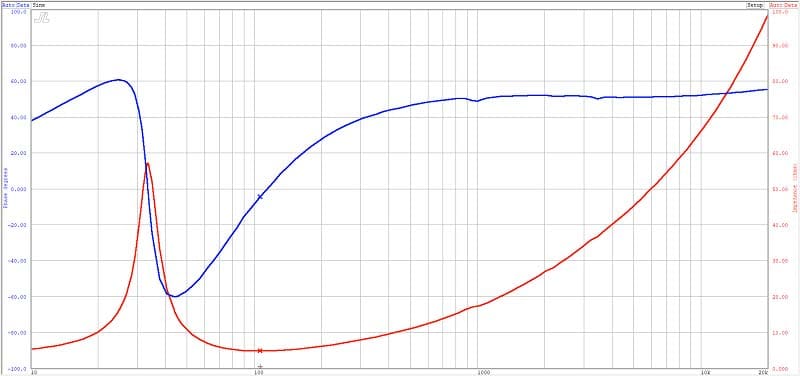
As you can see from the impedance and reactance measurements, the subwoofer remains very well behaved up to 1 kHz, where there is a small bump in the reactance response. This bump will correlate to some sort of resonance in the system – either in the cone, dust cap or the surround. There’s a second at 3.5 kHz. Having these at such a high frequency is impressive as they are well out of the range where the subwoofer will be used. This is a measurable testament to the functional benefits of the MRC cone and Separated Notch Edge Surround.
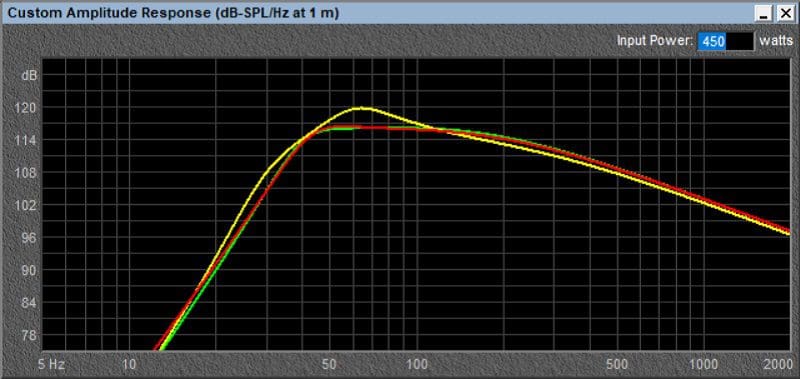
The predicted response simulations, based on the provided specifications the measurements I made after break-in, correspond almost perfectly. Good job to Sony for getting this information correct. This is critically helpful information that not every speaker or subwoofer manufacturer seems to be able to provide.
Sony Mobile ES Subwoofer Listening Evaluation
With the enclosure constructed and the driver broken in, I set the subwoofer up in my listening room. I have a new amplifier for testing subs that’s capable of producing up to 900 watts of power into a 4-ohm load – more than enough to let me crank on this without concern of running into clipping. I configured the sub to play from 63 Hz and down with an 18 dB/octave filter and the bookshelf speakers to play from 80 Hz and up at the same slope. The underlap allows me to play the subwoofers at a slightly elevated level that matches a typical in-car target response curve. I always double-check the polarity of the sub relative to the tower speakers to ensure that they’re combining properly at the listening position before I begin listening.
As an aside, I went a little overboard with the enclosure construction. While it would sound just fine in raw MDF with the large flared port, my friend Andrew Davison asked how I was going to finish it. One thing led to another, and well, things might have gotten a little out of hand. It’s worth noting that the yellow on black for the Mobile ES logo isn’t officially correct. I’m waiting on yellow plastic for that.
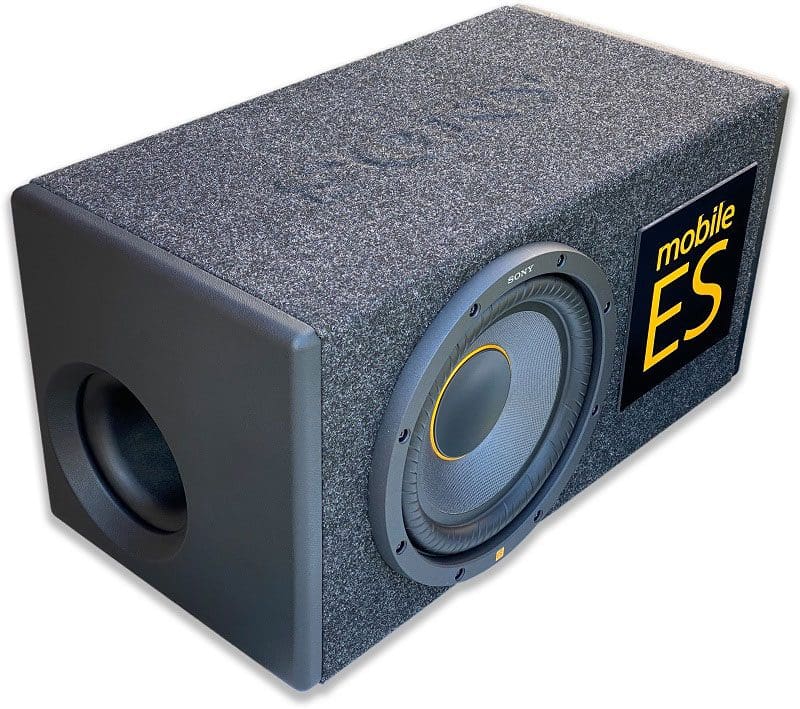
The first track was “Rough Boy” by ZZ Top, chosen in honor of Dusty Hill’s passing. The introduction to the song has good strong energy that peaks at 40 Hz with extension down to 30. It’s one of those musical moments that puts a smile on your face when played loudly. The XS-W104ES did a great job of resolving this bass line. The beats were solid and seemed effortless with good clarity.
Next was “Block Rockin’ Beats” by the Chemical Brothers. The rolling bass drop at 1:06 into the track has significant energy at 30 hertz. This is a test of linearity more than dynamic capabilities. Again, the Mobile ES sub handled it effortlessly. The waves of bass filled the listening room and were felt in the couch.
“Boom Boom Pow” by Black Eyed Peas starts with an introduction to the album. At 44 seconds into the track, there’s one of the deepest bass drops I’ve ever witnessed. It starts with peak energy at 53 hertz then drops down to a woofer-damaging 25 hertz with significant energy at 5 hertz. Yes, five. Given that I have the sub in a bass-reflex enclosure, the lowest pressure waves weren’t audible, but the experience was still amazing. The sub gets good and low but not quite infrasonic in a vented enclosure.
The next two tracks were “Closer” by Nine Inch Nails and “Bad” by Michael Jackson. The XS-W104ES did a great job of resolving the bass line in both tracks. I’d give it an 8.5 out of 10 for detail. That’s pretty amazing, considering subwoofers that offer audibly better performance cost three to six times more. This is a good example of value and diminishing returns on investment. The Sony sub performs well above its pay grade but leaves room for those who need to go all-in. I like it. I like it a lot!
Conclusions on the Sony Mobile ES Car Audio Subwoofer
Developing car audio products for a company as global as Sony isn’t an insignificant challenge. Balancing the performance needs of the North American, European and Asian markets with a solution that bats home runs in all categories, including price, is an impressive feat. I’d have no problem recommending Sony’s new XS-W104ES subwoofer to anyone looking for a great-sounding sub that can play loudly and still deliver great musicality and detail.
To find a Sony Mobile ES retailer near you, visit the Mobile ES page at Sony.com. Also, be sure to follow Sony Electronics on Facebook, Instagram and their YouTube channel to keep up with the new products they’re adding to the amazing Mobile ES line.
